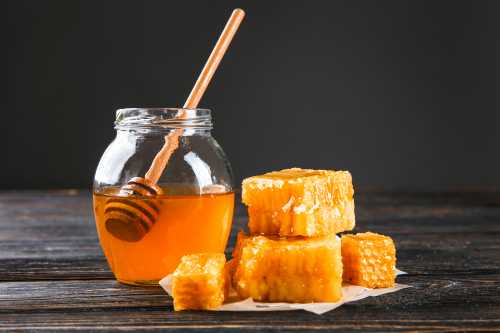Sage Honey
Sage honey is made by bees from nectar the bees have gathered from Salvia officinalis, a plant also known as Common Sage, Garden Sage, or in some parts of the world, Dalmation Sage.
Sage is a popular herb, with culinary use.
Description And Properties Of Sage Honey
Sage honey may have an orange or slightly reddish tinge to its colour, and a strong aroma1.
A Croatian study assessed sage honey as follows1:
|
Visual assessment: |
Colour intensity: medium to dark Colour tone: normal honey colour with reddish/orange tone |
|
Olfactory assessment: |
Intensity of odour: strong Description: floral – fresh fruit |
|
Tasting assessment: |
Sweetness: medium |
|
Physical characteristics: |
Crystallisation rate: moderate |
(Adapted from Kenjerić et al, 20061).
Honey has been found to have a number of health benefits, and in particular, its anti-bacterial properties are well documented.
However, there is some slight variation in efficacy, depending on the type of honey.
Whilst I have found little scientific study relating specifically to sage honey, one study2 found 3 chemical markers distinct to sage honey indicating the presence of the anti-oxidants:
- resveratrol,
- epigallocatechin and
- pinostrobin.
Reference
1. Čačić Kenjerić, Daniela & Primorac, Ljiljana & Mandić, Milena & Bubalo, Dragan & Pirički, A.P. & Flanjak, Ivana. (2006). Dalmatian sage (Salvia officinalis L.) honey characterization. Deutsche Lebensmittel-Rundschau. 102. 479-484.
2. Mărgăoan R, Topal E, Balkanska R, Yücel B, Oravecz T, Cornea-Cipcigan M, Vodnar DC. Monofloral Honeys as a Potential Source of Natural Antioxidants, Minerals and Medicine. Antioxidants (Basel). 2021 Jun 25;10(7):1023. doi: 10.3390/antiox10071023. PMID: 34202118; PMCID: PMC8300703.
If you found this page helpful or interesting, I'd really be grateful if you would share it with others - if not this page, perhaps another, such as Gardening For Bees.
Thank you so much :) .
